Разгледници извадок од книгата: „Битола низ стари разгледници“ Автор: Димче Најдов ISBN 978-608-4754-01-5 COBISS.MK-ID 96689930
The book is in Macedonian language. Translation of captions in English: Macedonia 1912-1918 editors
- - -
A group of citizens waiting in line for flour. Location - in front of today's Fire unit and Historical Archive. The second part of the image has title “The place of the Turkish barracks”. The barracks were located behind today's Economic school and Municipal building.
Група граѓани чекаат да им доделат брашно. Пред денешната Противпожарна единица и Историскиот архив е вториот дел од сликата на која стои: Местото на турската касарна. Самата касарна се наоѓала зад Економското училиште и општинската зграда.
Image number 35 is a view of the Stone Bridge on River Kurdeles and Solunska street seen to the west. Picture number 36 is the left side of Dragor river between “Lenski” Bridge and the bridge at the “Bezisten”.
Сликата број 35 е поглед на Камениот Мост на реката Курделес и улицата „Солунска” гледана кон запад. Слика број 36 е левата страна на реката Драгор измеѓу Ленски Мост и мостот кај Безистенот.
On image number 31 and 32 is the main street (Sirok Sokak). On image 31 observed toward south in front of the "Solunska" street. On image 32 observed toward north in front of today's Magnolia square.
Sirok Sokak at the time was known as the street "King Peter", mistakenly written on this postcard as "Prince Alexander."
На сликата број 31 и 32 е главната улица-Широк Сокак гледан кон југ пред улицата „Солунска” , а на сликата број 32 гледан кон север пред плоштадот „Магнолија”. Широк Сокак, познат во тоа време како улица “Крал Петар”, по грешка е напишана “Принц Александар”.
Postcard issued for the Christmas holidays and Valentine's Day – Bitola 1917
Разгледница издадена по повод Божиќните празници и денот на вљубените, Битола 1917
Postcard issued for the Christmas holidays and Valentine's Day – Bitola 1917
Разгледница издадена по повод Божиќните празници и денот на вљубените, Битола 1917
Postcard issued for the Christmas holidays and Valentine's Day – Bitola 1917
Разгледница издадена по повод Божиќните празници и денот на вљубените, Битола 1917
Postcard issued for the Christmas holidays and Valentine's Day – Bitola 1917
Разгледница издадена по повод Божиќните празници и денот на вљубените, Битола 1917
Postcard issued for the Christmas holidays and Valentine's Day – Bitola 1917
Разгледница издадена по повод Божиќните празници и денот на вљубените, Битола 1917
Panorama of Bitola westward made from the Clock Tower in 1917. Yeni Mosque and buildings of Pekmez Market are in the foreground.
Панорама на Битола кон запад направена од Саат кулата во 1917 година. Јени џамија и објектите од Пекмез Пазар се во преден план.
Panorama of Bitola eastward made from the Clock Tower in 1917, overlooking the Peliser in the background.
Панорама на Битола кон исток направена од Саат кулата во 1917 година, со поглед на Пелисер во заднината.
Shirok Sokak, the main street in Bitola, 1917
Широк Сокак, 1917
The entry of the French soldiers in Bitola on 19 November 1916.
Влегувањето на француските војници во Битола на 19 ноември 1916 година.
Shirok Sokak (Main Street in Bitola). French troops in sightseeing.
Широк Сокак. Француски војници во разгледување на градот.
"Solunska" street with Kurdeles river and the Stone Bridge. French soldiers on horses on the Main Street in 1917.
Улицата „Солунска” со реката Курделес и Камениот Мост. Француски војници на коњи по Широк Сокак, во 1917 година.
One street in Bitola. The location is not known.
Една улица во Битола. Локацијата на истата не е позната.
Consequences of the bombing of Bitola
Последици од бомбардирањето на Битола
Street in the center of Bitola after the bombing.
Улица во центарот на Битола по бомбардирањето.
Street in Bitola (Shirok Sokak) after the bombing.
Улица во Битола (Широк Сокак) по бомбардирањето.
Street in the center of Bitola after the bombing.
Улица во центарот на Битола по бомбардирањето.
Street in the center of Bitola after the bombing.
Улица во центарот на Битола по бомбардирањето.
Consequences of the bombing of Bitola
Последици од бомбардирањето на Битола
Consequences of the bombing of Bitola
Последици од бомбардирањето на Битола
Location of German artillery near the village Snegovo from where the city was bombed.
Локација на германската артилерија кај селото Снегово од каде го бомбардираа градот.
Bitola in ruins in 1917 on a postcard issued by Cliche J.M France.
Битола во урнатини во 1917 година на разгледница издадена од Cliche J.M од Франција.
Consequences of the bombing of Bitola
Последици од бомбардирањето на Битола
First civilian casualties in the First World War suffocated by the poison gas used by the Germans. In the period from 9 to 11 March, 1917 from poison gas in Bitola were killed 550 people, mostly women and children.
Тоа се првите цивилни жртви во Првата светска војна кои беа задушени од отровниот гас употребен од Германците. Во периодот од 9 до 11 март 1917 година од отровен гас загинаа 550 жители, претежно жени и деца.
Panorama of Bitola from Tumbe Cafe. In the foreground is the Red Barrack which has been destroyed by shelling. A little later suffered the White Barrack from explosion of the ammunition that was stored in within.
Панорама на Битола од Тумбе Кафе. Во преден план е Црвената касарна која овде е веќе разрушена од бомбардирањето. Малку подоцна настрада и Белата касарна од експлозија на муницијата која беше складирана во касарната.
Ruins somewhere in the center of Bitola. After all the heavy shelling it is very difficult to recognize the part of the city in this image. In the background on the left side of the center are visible Isac and Yeni Mosque.
Рушевини некаде во центарот на градот. По сите тие жестоки бомбардирања многу е тешко и да се препознае делот од градот на сликата. Во заднината на левата страна од центарот видливи се Исак и Јени џамија.
371
Bitola. Remnants of demolished and burnt houses after the bombing.
Битола. Остатоци од срушени и изгорени куќи по бомбардирањето.
Bitola, 17 August 1917. Southwest corner of today's streets Sirok Sokak and "Dimitar Ilievski-Murato". At this place around 1920 it was built the restaurant "Central" and later, around 1975 hotel "Epinal".
Битола, 17 август 1917. Југозападниот агол на денешните улици Широк Сокак и „Димитар Илиевски-Мурато”. На ова место околу 1920 беше изграден ресторанот “Централ” а подоцна, околу 1975 година, на ова место ќе биде изграден хотелот “Епинал”.
Panorama of Bitola from Yeni Mosque in 1917. Consequences of the bombing are visible everywhere. The building of the Workers' University in the middle of the picture looks the least damaged, but all the surrounding houses on Ruzveltova and the Main Street are totally destroyed. The building of today's Post Office is also without roof as houses in the foreground of this postcard.
Панорама на Битола од Јени џамија во 1917 год. Последици од бомбардирањето се видливи насекаде. Зградата на Работничкиот универзитет кон средината на сликата изгледа најмалку оштетена, но сите околни куќи од Рузвелтова улица и Широк Сокак се тотално уништени. Зградата на денешната пошта е, исто така, без покрив како и куќите во предниот план на оваа разгледница.
Panorama of the western part of the city from the Clock Tower. In addition to homes, in front of this picture, the old Municipality building is completely destroyed, the building of the Gymnasium is without a roof and windows, as many other buildings in the area that are less visible in the picture.
Панорама на западниот дел на градот од Саат кулата. Покрај куќите, во предниот дел на оваа слика, зградата на старата општина е потполно уништена, зградата на Гимназијата е без покрив и прозорци и многу други објекти во околината кои се помалку видливи на сликата.
In such a condition Bitola welcomed the end of the First World War. Ruins, diseases, lack of basic necessities of life, poverty, those were the characteristics of that period of four long years. A number of people which left the city because of the bombing, were awaiting the end of the war to come back and start a new life in their destroyed hometown.
Во ваква состојба Битола го дочека крајот на Првата светска војна. Рушевини, болести, недостиг на најосновните потреби за живот, сиромаштија, тоа беа карактеристиките за тој период од четири долги години. Огромен број кои го напуштија градот заради бомбардирањето, го чекаа крајот на војната да се вратат назад и да започнат нов живот во својот разрушен роден град.
Read More... (Прочитајте повеќе...)
- Bitola WW1 Postcards - Part 1 (Разгледници од Битола за време на Првата светска војна)
- Bitola WW1 Postcards - Part 2 (Разгледници од Битола за време на Првата светска војна)
- Bitola WW1 Postcards - Part 3 (Разгледници од Битола за време на Првата светска војна)
- Bitola WW1 Postcards - Part 4 (Разгледници од Битола за време на Првата светска војна)




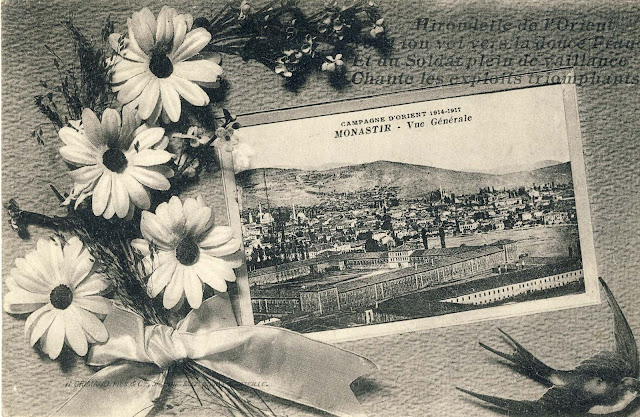
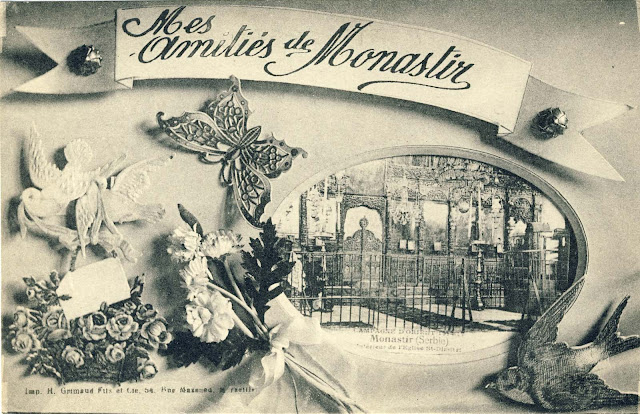


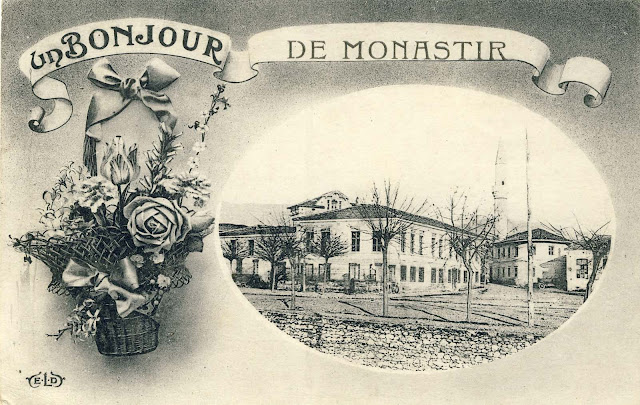
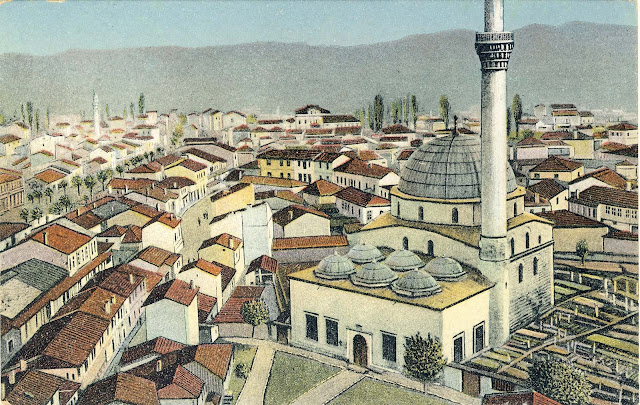
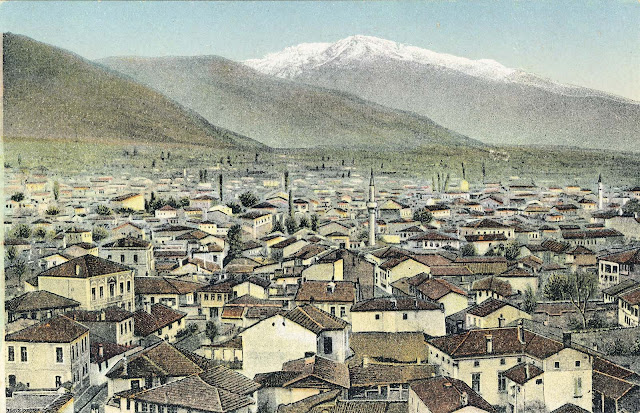
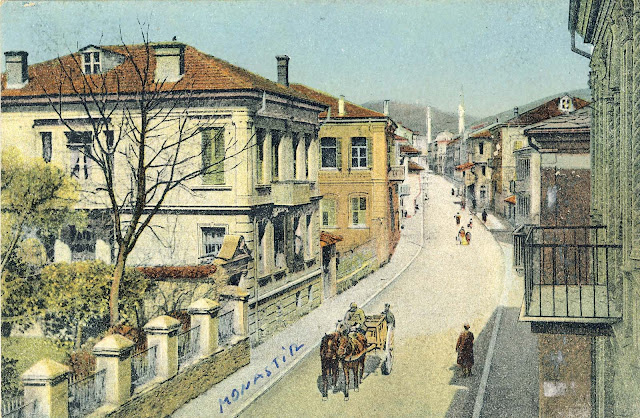
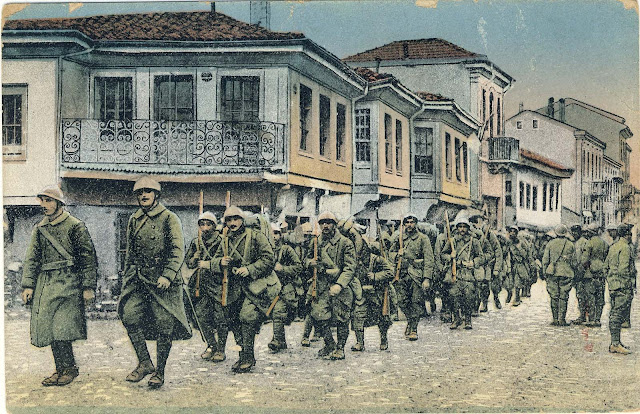



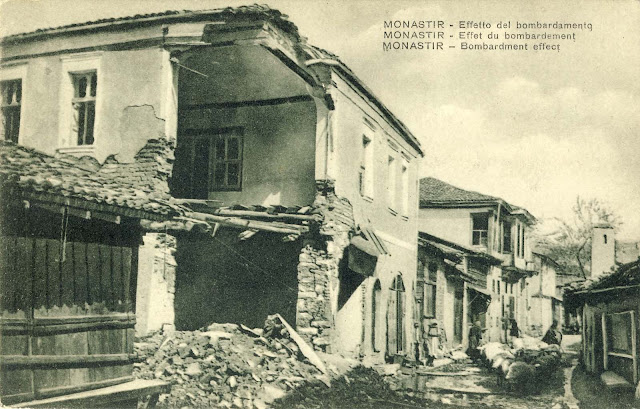



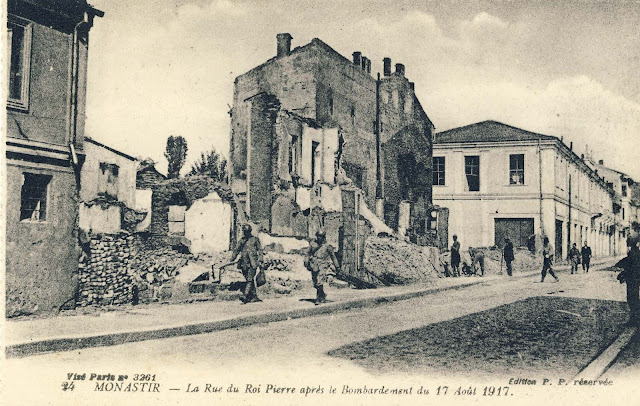
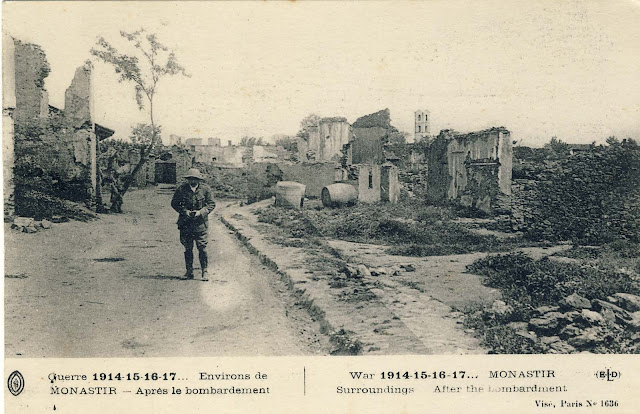
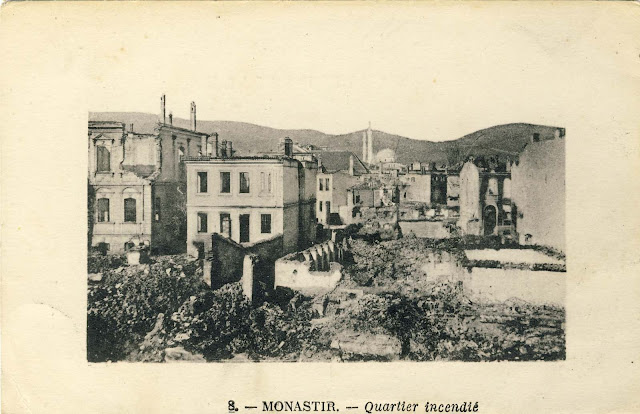



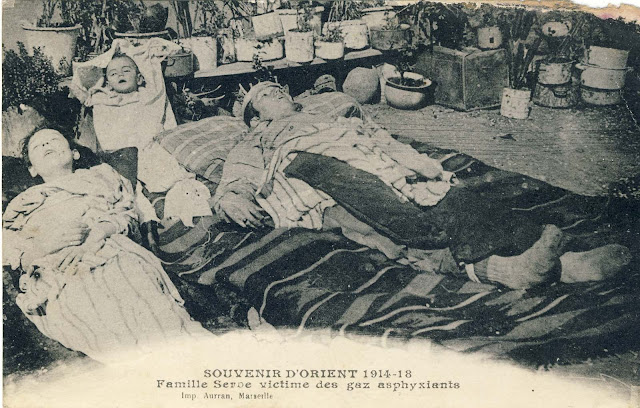
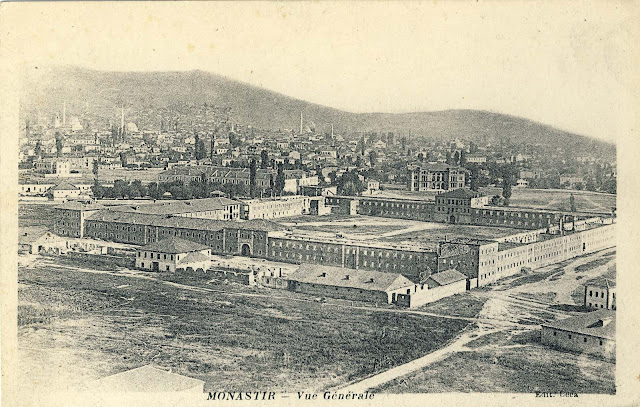





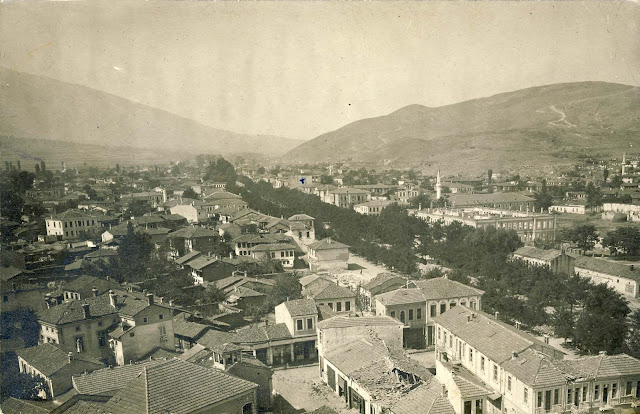




0 Comments